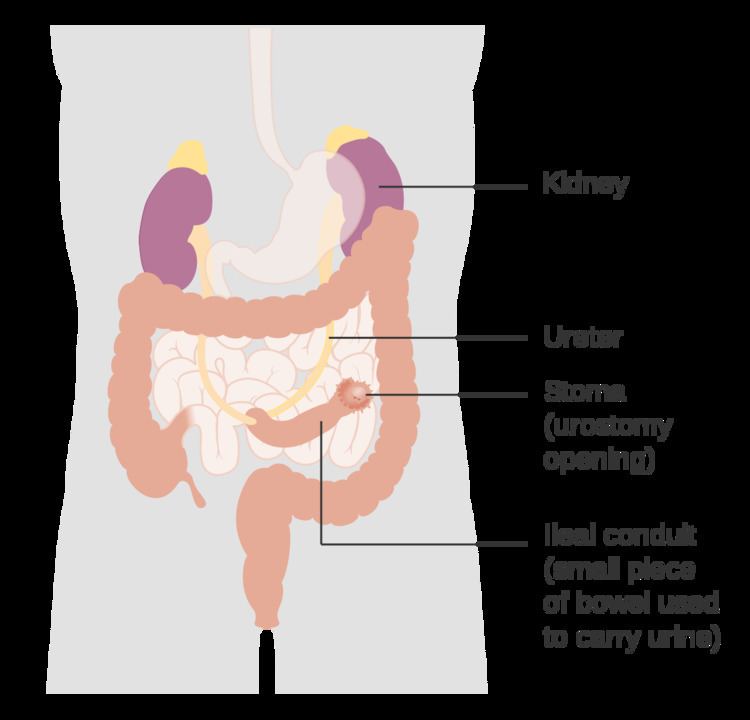 | ||
A urostomy is a surgical procedure that creates a stoma (artificial opening) for the urinary system. A urostomy is made to avail for urinary diversion in cases where drainage of urine through the bladder and urethra is not possible, e.g. after extensive surgery or in case of obstruction.
Contents
Techniques
Techniques include:
A "continent urostomy" is an artificial bladder formed out of a segment of small bowel. This is fashioned into a pouch, which can be emptied intermittently with a catheter. It avoids the need for a stoma bag on the urostomy.
Routine care
The appliances are usually changed at a time of low fluid intake, such as early in the morning, where less urine production makes changing easier.
Indications
Urostomy is most commonly performed after cystectomy, such as may be necessary in, for example, bladder cancer. Other indications include severe kidney disease, accidental damage or injury to the urinary tract, surgical complications because of non-related pelvic or abdominal surgery, congenital defects that cause urine to back up into the kidneys, or urinary incontinence.
